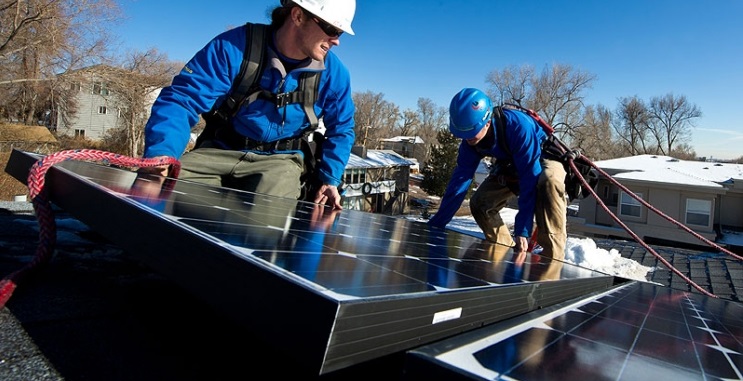When it comes to driving down solar balance of system (BOS) costs, a key focus is on cutting material, shipping and labor expenses. Innovative developments in panel edging and rack-mounting are doing just that.
Solar photovoltaic (PV) electricity has significant potential to contribute to U.S. energy needs. But the progress of this low-carbon energy source requires significant cost reductions if it is to fulfill its promise and play a significant role.
As the cost of PV modules becomes an increasingly smaller piece of the total solar project cost, balance of system (BoS) cost has become a focal point of efforts to increase feasibility.
BoS includes all non-module elements of a PV system, including both soft and hardware costs. The soft costs comprise developer/installer business costs (such as customer acquisition costs, carrying costs, insurance, performance and payment bonds, incentive program participation, administrative costs, and labor) as well as financing and contracting costs, system design and engineering expenses, and costs related to permitting and interconnection.
Hardware costs will include inverters, conduit, wiring, monitoring hardware, and mounting systems and fasteners.
While costs for PV modules have been decreasing, BoS has failed to keep pace. With decreasing PV module cost, BoS represents an increasing percentage of the total cost per watt. To illustrate, in 2008, on average, the costs of the PV module represented approximately 67 percent of a project’s total cost. By 2012, a GTM article cited that it had dropped to 32 percent.
While there has been some reduction in BoS, its very nature poses challenges to significant cost reduction. The installation process requires the involvement of a number of different participants, including developers, installers, property owners, governmental entities, financiers, utilities, and labor.
In addition, these costs and participants vary according to the type of system, customer, and regulatory regime.
Efforts have been made to coordinate and focus BoS reduction efforts. The U.S. Department of Energy’s SunShot Initiative issues competitive solicitations to fund a wide range of projects that target soft costs.
Strategies for BoS cost reduction that have been debated include wind exposure reduction, streamlining approval processes, rethinking electrical system design and architecture, innovative structural design, minimization of labor requirements, efforts toward system uniformity and simpler installation, and opportunities to streamline business processes. Given the variety of factors inherent in BoS cost, a holistic approach, addressing as many components as possible, is key.
One area of particular concern to solar installers in the residential and commercial arena has been local permitting. Prior to the installation of a solar system on a property, most jurisdictions require both state and local approvals, with the permitting requirements varying based on location, jurisdiction, and the type and size of the system. Identifying the required approvals and navigating the permitting processes can be time consuming and costly.
In an attempt to achieve reductions of this significant cost, the U.S. state of Vermont adopted legislation (Vermont Energy Act of 2011) providing for net metering and a streamlined permitting process for small solar systems (less than five kilowatts).
The scope of the legislation was expanded from five kilowatts to 10 kilowatts. In order to interconnect and net meter, customers must obtain a Certificate of Public Good from the Vermont Public Service Board (PSB). To receive a Certificate of Public Good, the customer must register the system with the PSB. The customer must inform the PSB about the project and comply with the electric utility’s interconnection requirements.
If the utility has any issues with the system’s compliance with interconnection requirements, those issues must be raised within 10 business days. If the utility does not timely raise any issues, a Certificate of Public Good is automatically deemed issued and the customer may proceed with installation. Local zoning and permitting is preempted. While this solution is limited to residential and small-commercial scale projects, the effort highlights potential solutions that may be applied to a wider range of projects.
Reducing BoS costs will continue to be in focus in an effort to improve solar feasibility. To achieve the type of cost reductions necessary requires a cooperative effort between developers, installers, suppliers, regulators, utilities, and policy makers.
This article originally appeared on Lexology, and was written by Charles W. Malcomb | Hodgson Russ LLP
















Comments